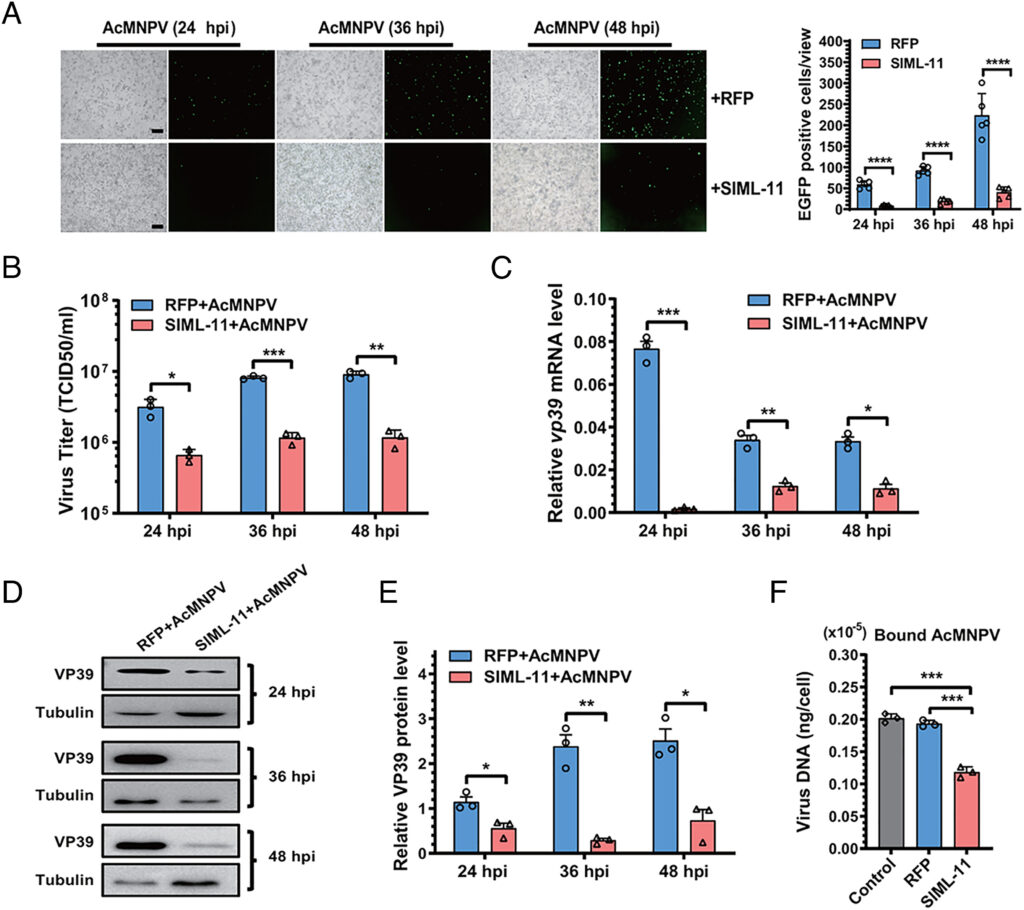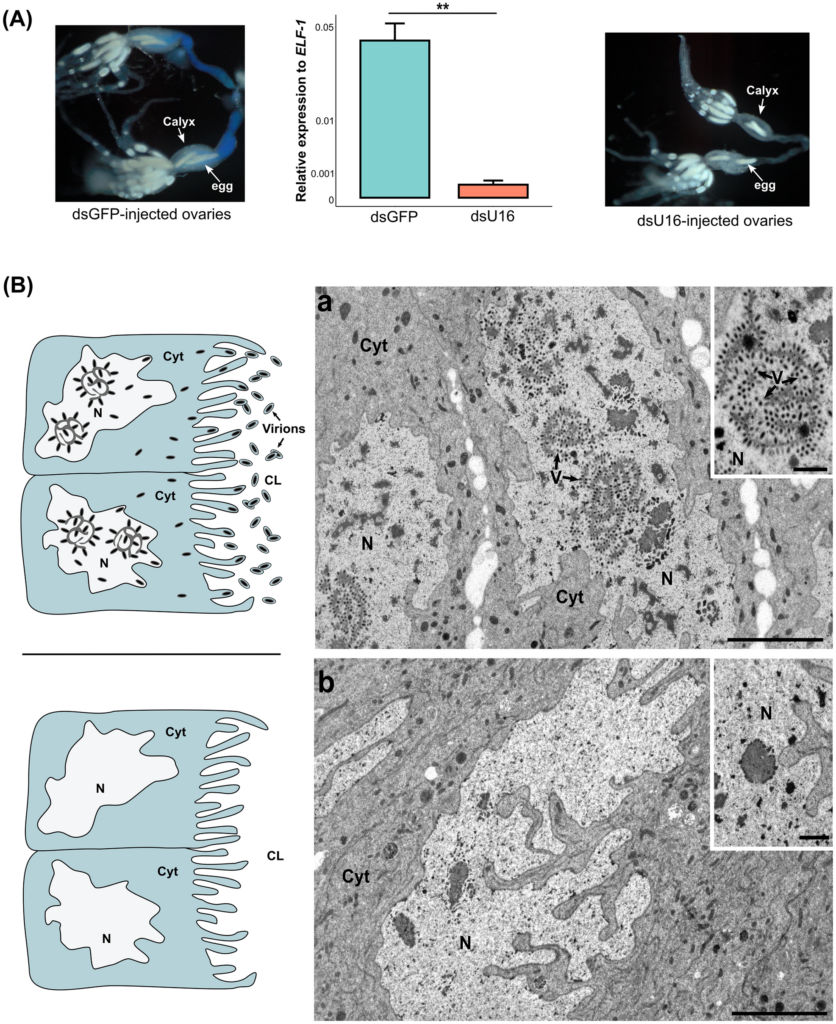Four nudivirus core genes present in the genome of Venturia canescens are required for virus-like particle formation and prevention of encapsulation of parasitoid wasp eggs

Venturia canescens is a parasitoid wasp that harbors a domesticated endogenous virus (DEV) and parasitizes host insects like Ephestia kuehniella. The V. canescens DEV evolved from an alphanudivirus and produces virus-like particles (VLPs) in females that protect wasp eggs from a host immune defense called encapsulation. In contrast, very few DEV genes required for VLP formation and function have been identified. In this study, we characterized five V. canescens DEV genes of unknown function that all nudiviruses encode. Three of these genes are single copy (OrNVorf18-like, OrNVorf61-like, and OrNVorf76-like), while OrNVorf41-like has expanded into a six-member family and OrNVorf47-like has expanded into a three-member family. Sequence analysis indicated all of these genes retain essential motifs present in nudivirus homologs, while transmission electron microscopy (TEM) studies characterized the timing of VLP formation during the wasp pupal stage. RNA interference (RNAi) assays identified OrNVorf18-like, OrNVorf61-like, OrNVorf41-like-1, and OrNVorf41-like-2 as genes that are required for normal VLP formation. Knockdown of OrNVorf47-like family members did not affect VLP formation but did disable binding of VLPs to V. canescens eggs and protection against encapsulation. Disabled formation of VLPs in response to RNAi knockdown of OrNVorf18-like, OrNVorf61-like, OrNVorf41-like-1, and OrNVorf41-like-2 also resulted in wasp eggs being encapsulated. In contrast, knockdown of OrNVorf76-like had no effect on VLP assembly, egg binding, or encapsulation. Altogether, reported results significantly advance our understanding of V. canescens VLP (VcVLP) formation and function.
Importance: Understanding how V. canescens coopted an alphanudivirus to produce VcVLPs is of interest to the study of virus evolution. Our results show that three nudivirus core genes have essential functions in VcVLP formation, while one is essential for the novel function of binding to wasp eggs and protection from encapsulation, which is the most important immune defense of insects against parasitoids.
Meng Mao, Corinne M Stouthamer, Ange Lorenzi, Michael R Strand, Gaelen R Burke. J Virol. 2025 Nov 20:e0130525. doi: 10.1128/jvi.01305-25.







